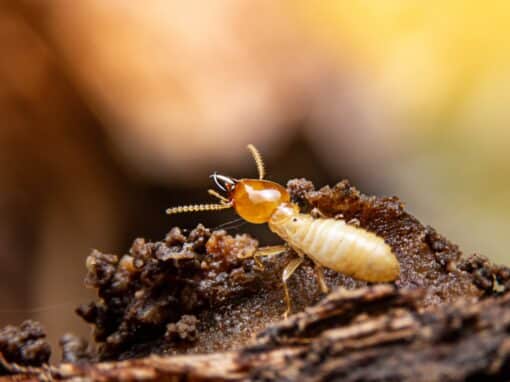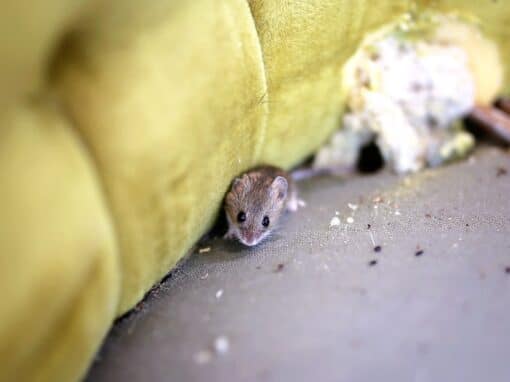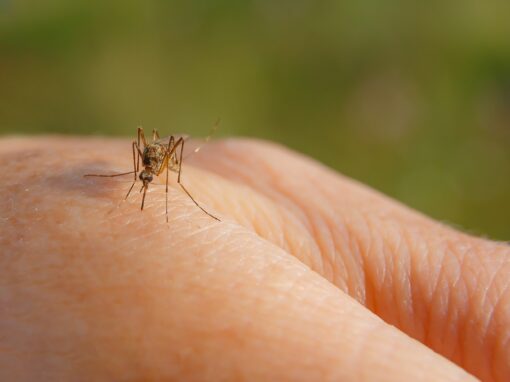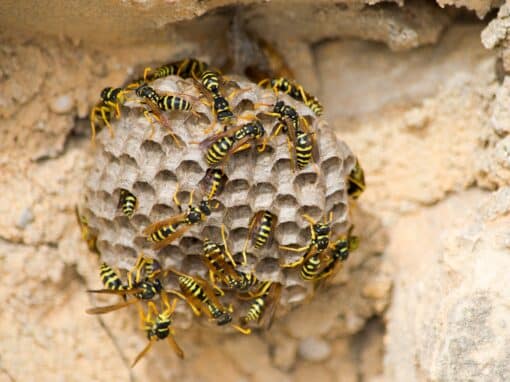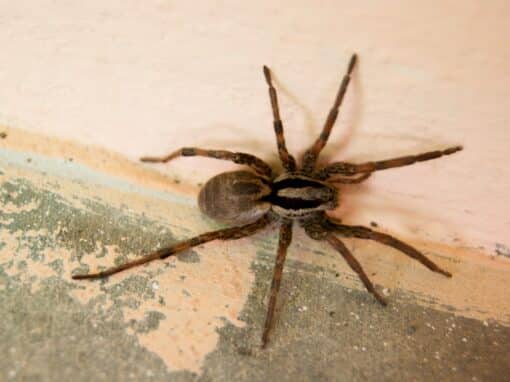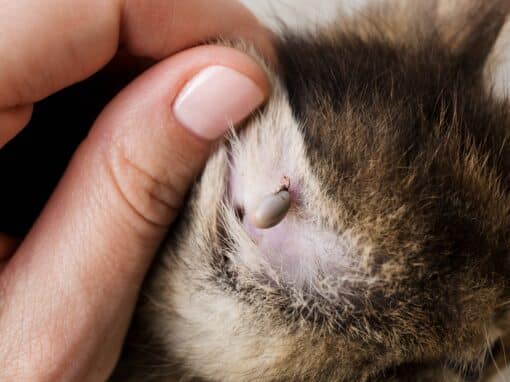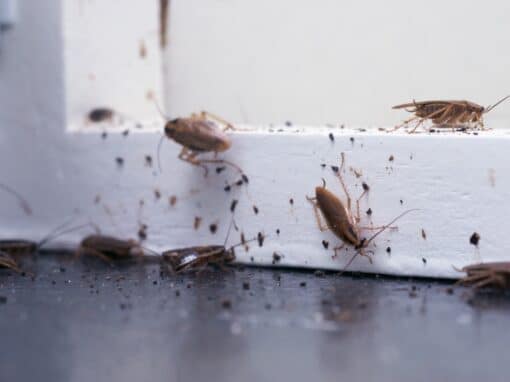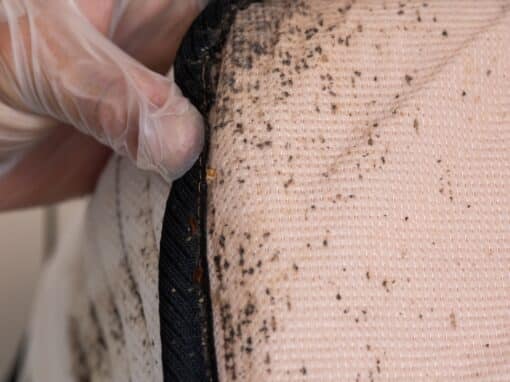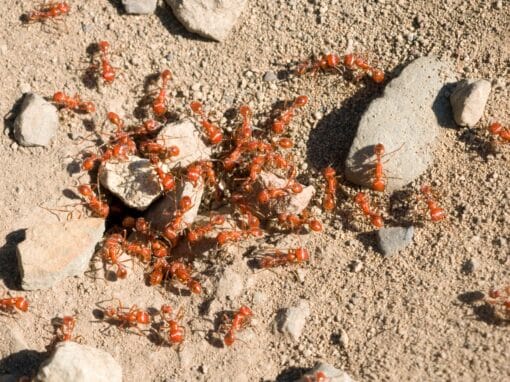Termites
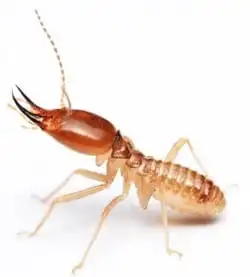
How To Identify and Control Them
Does termite damage worry you? If so, you are not alone. Every year termites cause billions of dollars in structural damage, and property owners spend over two billion dollars to treat them. This page focuses on how you, as a concerned owner, can identify and help protect your property from termites through effective prevention measures and appropriate use of termite treatments.
How Do I Know if I Have Termites?
The first step in prevention is to be on the alert for termites. Termites rarely emerge from soil, mud tubes, or food sources through which they are tunneling. Most people are not aware they have termites until they see a swarm or come across damage during construction. Some of the ways to discover if you have termites are:
- Look for mud tubes with small, creamy-white insects
- Probe exposed wood for hollow spots with a flat head screwdriver
- Identify termite swarms, which are sometimes mistaken for ant swarms
Active Pest Infestation Services
Do you have an active pest, rodent, or other wildlife situation that needs immediate attention? Give us a call or contact us, and we can give you a specialized quote tailored to your exact needs.
Get a quote from us M-F, 8am to 5pm
HOW CAN I PREVENT TERMITE INFESTATION?
MAINTAIN THE TERMITE PREVENTION FEATURES:
- During construction, use a concrete foundation and leave a ventilation space between the soil and wood.
- Cover exposed wood surfaces with a sealant or metal barrier.
- After construction, keep the soil around the foundation dry through proper grading and drainage, including maintenance of gutters and downspouts.
- Reduce openings that offer termite access to the structure. Fill cracks in cement foundations and around where utilities pass through the wall with cement, grout, and caulk.
- Fix leaks immediately.
- Keep vents free from blockage, including plants.
- Ensure that trees and shrubs are not planted too close to the structure and do not allow them to grow against exposed wood surfaces.
- Do not pile or store firewood or wood debris next to the house.
- Inspect periodically to help ensure that termite colonies do not become established.
- Purchase the #1 Termite Prevention System in the country from Meers: “Sentricon.”
WHAT ARE THE DIFFERENT TYPES OF TERMITE TREATMENTS
The new home construction industry is constantly changing and termites love new homes. New construction pretreat can be a beneficial step in the building process. Did you know that homeowner’s insurance doesn’t cover termite damage? Protect your huge investment from termites and have your new home pretreated. You can install the #1 life long termite colony elimination system in the country!
NON-CHEMICAL TREATMENTS
- Physical barrier, typically incorporated during construction.
- Steel mesh and sands of particular sizes have been shown to perform effectively as physical barriers.
CHEMICAL TREATMENTS
Before a company can sell or distribute any pesticides in the United States, other than certain minimum-risk pesticides, the EPA must review studies on the pesticides to determine that it will not pose unreasonable risk to human health or the environment. Once we have made that determination, we will license or register that pesticide for use in strict accordance with label directions. The pesticides used for the prevention or treatment of termite infestations, call termiticides, must demonstrate the ability to provide structural protection before we register them. in all cases, termiticide application can only be properly performed by a trained pest management professional.
APPROVED TREATMENTS INCLUDE:
- Liquid soil-applied termiticides
- Termite baits
- Building materials impregnated with termiticides, and wood treatments.
LIQUID CHEMICAL TREATMENTS
Even with the newest non-repellent termiticides, a trench is dug around the foundation of the home and holes are drilled every 12 inches through the floor or foundation. Hundreds of gallons of diluted chemical solution are injected into the soil around and under the structure. But liquid chemicals tend to break down over time, leaving untreated gaps termites can tunnel through. Special precautions must be taken on properties with wells, cisterns, sub-floor heating ducts, or other vulnerable features.
TREATED WOOD
Applied during construction, or when trying to save infested structures, borates and pressure treatments pentrate the surface of bare wood to protect it against termites. Borates are toxic to the termites that consume them, but if they don’t eat the treated lumber, termites can still construct mud tubes on the surface.
DO-IT-YOURSELF TOOLS
There are a few termite treatments available in retail stores, including foams, liquids, powders, and baits. However, most homeowners have limited knowledge, time, training, and tools. The labels on many do-it-yourself products caution that they are not recommended as a sole protection from termites.
WHY YOU NEED A TERMITE INSPECTION
Every year termites cause billions of dollars in structural damage, and property owners spend over 2 billion dollars to treat them. That’s more than earthquakes, fires, and floods combined! Customers who are in the market for a new home or other building should consider doing termite inspections. No one wants to make an exciting new purchase, only to find it has an expensive infestation. Prevention is key.
Determining whether your home is infested with termites requires the knowledgeable inspection of a professional. A termite professional will be able to find the termite hideouts. With a professional, you can save your home from destruction and prevent emotional stress.
Termite colonies can eat in multiple places all at the same time, 24 hours a day, 365 days a year. It’s not unusual to have one termite colony in two or more houses. Termites are methodical and persistent, but they are not fast when it comes to eating wood. If an average-sized termite colony in East Texas—about 200,000— were eating on just one 2×4 in your house, the termites would eat about 6 inches in 12 months. Termites cannot eat through concrete, but if your house is on a slab, termites can gain entry by coming around the outside of the slab and through a mortar joint. They can come up expansion joints where two slabs come together, and termites can come up around your plumbing penetrations or a crack in the slab. Again, prevention is key.
Termites can be hard to find if you do not know what you’re looking for. Because they live in the ground, termite damage will always be full of dirt. You might notice dirt that looks like fine sand in an area, and after you clean, it comes back. If you’re not sure, have one of our pest control technicians come take a look for you. It’s recommended that homes over five years get checked once a year. Termites move around just like any other animal, and just because you did not have termites when you moved in does not mean you will not have them six months later.
Most people find out they have termites when they swarm in the spring, the people find damage in their sheetrock or trim. Swarming is how termites procreate. They can come out by the hundreds or even thousands and look like black flying ants. Termite swarmers do not bite, sting, or carry infectious diseases. Their purpose is to start a new colony in different soil.
There are systems designed to detect termite activity before they enter your home. Then all of them can be eliminated, including the queen. The system stays in place so that if any other termite colony tries to move in, it will detect them too. It’s like having your own termite alarm system around your house that has the benefit of killing termite pests. Check out the Sentricon system for more information on your termite alarm.
TERMITE INSPECTION FOR REAL ESTATE TRANSACTIONS
Termite Inspections done for the purpose of buying or selling a house are called W.D.I. (wood destroying insect) reports. These reports are regulated by the state, and we fill out the required information. The reports include a section on termite activity, conducive conditions, previous treatments, and other types of wood destroying insects, like carpenter ants, and other organisms that may affect the house. The cost of W.D.I. reports vary based on the size of the house, where it’s located, and the type of foundation.
WHY TRUST & CHOOSE MEERS FOR A TERMITE INSPECTION?
Since 1972, Meers Pest Solutions is your termite control professionals in Lubbock and West Texas. Meers handles all aspects of termite treatments such as spot treatments, preventive treatments, and complete home and business treatments.
Meers Pest Solutions is regulated by the Texas Department of Agriculture. In addition, we truly care about you, our customer. With every termite treatment, a one-year renewable service agreement and an annual termite inspection is included. These agreements are important because most treatments last about five years and sometimes, even with the best treatments, termites might reappear.
The Bottom Line On Termites
We want to get rid of termites as much as you do. And we want to protect your home and the environment as much as you do. The Sentricon® System eliminates termite colonies and prevents colonies from starting with just a few grams of active ingredient. Perhaps that’s why the Sentricon® System is preferred by more homeowners than any other brand. Meers Pest Solutions is proud to offer Sentricon® as our most effective tool in controlling termites.
Don't Let Pests Be A Pest
We've been serving the Lubbock area for 50 years, so we know a thing or two about treating the pests in our area. With a friendly, knowledgable team and competitive pricing, give us a call today and discover the Meers Pest Solutions difference.
What's Bugging You?
